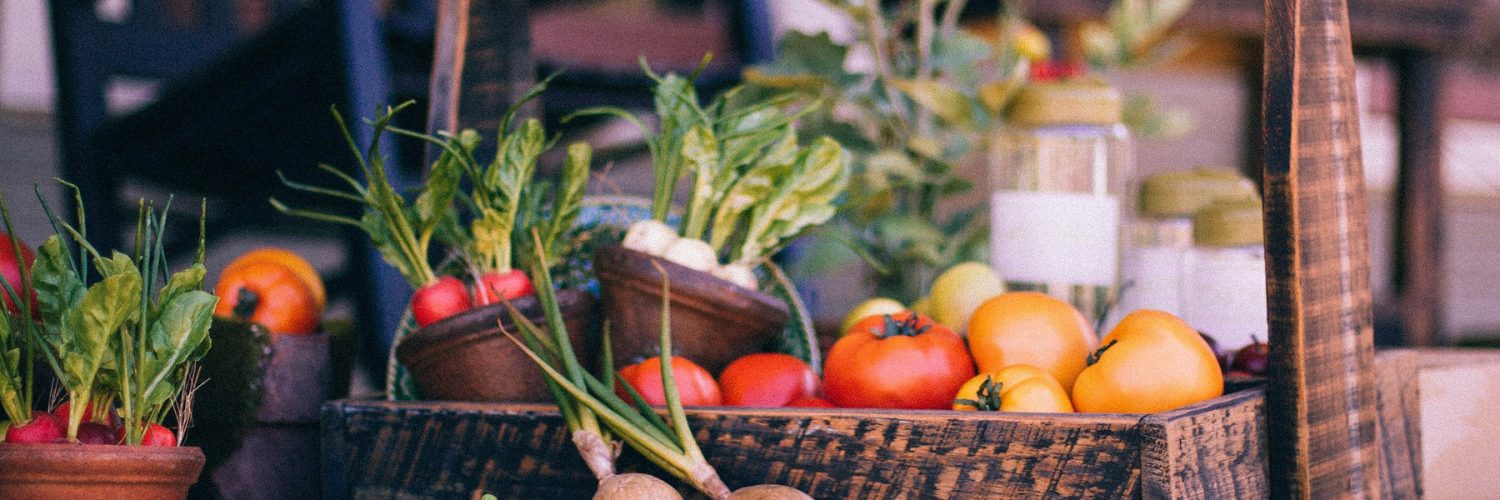Let’s be honest: with all of the competing health guidelines and trendy diet plans out there, it can be confusing to figure out what “eating healthy” really means. But one thing you can be sure of is that eating more fruits and vegetables is an always healthy choice.
If you aren’t quite sure which fruits and vegetables to pick, here’s an easy rule of thumb: make sure you are eating the rainbow (and no, I don’t mean the candy). Fruits and vegetables naturally come in a variety of bright, vibrant colors—and those colors are a sign of rich nutrients with powerful health benefits.
Naturally colorful foods tend to be nutrient-dense superfoods that can help you to keep your diet full of healthy choices. From red tomatoes to deep blue berries to purple cabbage, there are plenty of options to fill your plate with the colors of the rainbow.
Greens

Now, more than ever, green foods are well recognized as an important part of any healthy diet. Luckily, there is plenty of variety in this category, so nearly everyone is bound to find a personal favorite or two among the options.
What makes veggies green is a pigment called chlorophyll, which research has shown has antioxidant and anticancer effects. Green foods are also high in fiber, which is important for digestive health and can help you to lose weight, manage blood sugar, and more.
Green leafy vegetables, or cruciferous vegetables, are the highest rated vegetables for nutrient density. Vitamins E, C, and K, along with folate, selenium, and antioxidant polyphenols are abundant in cruciferous vegetables.
The cruciferous family includes kale, cabbage, Brussel sprouts, broccoli, arugula, and collard greens. These leafy greens have been studied for their beneficial effects on blood pressure, heart health, blood sugar, brain health, and more.
Green foods to add to your plate:
- Kale (and other leafy greens)
- Avocados
- Kiwifruit
- Spinach
- Wheatgrass
- Asparagus
- Green peppers
- Celery
- Limes
- Green beans
- Cucumber
Blues and Purples

The blue/purple coloration in foods comes from anthocyanins—potent antioxidant compounds that help to protect the body against cellular damage that can lead to illness and disease. Anthocyanins are associated with lower risk of high blood pressure, brain degeneration, diabetes, heart disease, and even cancer.
To get these nutrient benefits in your diet, look for deep blue and purple in your foods. Many of the options will be fruits, but there are also several vegetables (and even a grain) to look for as well.
Purple foods to add to your diet:
- Blueberries
- Blackberries
- Plums
- Eggplant
- Purple cabbage
- Purple potatoes
- Purple asparagus
- Black rice
Reds

Naturally, red foods are abundant in healthy nutrients like anthocyanins and lycopene. Lycopene, the antioxidant responsible for the bright red color, and has been associated with decreased risk of chronic diseases such as heart disease and cancer.[7,8] It’s naturally found in several foods, with tomatoes being one of the richest sources (providing more than 85% of the population’s dietary intake of lycopene).[7]
Red foods to add to your diet:
- Tomatoes
- Red bell peppers
- Strawberries
- Watermelon
- Cranberries
- Pomegranates
- Radishes
- Red onions
- Beets
- Apples
Oranges and Yellows
We all know that oranges and lemons are great sources of vitamin C, but that’s not all that the orange and yellow food category has to offer. These foods are also rich sources of carotenoids and other antioxidants.
Carotene, the carotenoid that gives orange foods their color, has been associated with reduced risk of diseases like cancer, especially lung cancer. Carrots (aptly named) provide about 51% of the overall dietary intake of alpha-carotenes.
Yellow & orange foods to add to your diet:
- Carrots
- Oranges
- Lemon
- Papaya
- Pineapple
- Sweet potato
- Yellow and orange peppers
- Apricot
- Pumpkin
- Squash
- Cantaloupe
Eating More Colors
If you want to make the most of your food choices and add more nutrient-dense foods to your diet, look for naturally colorful foods as healthy options.
Take stock of your daily diet and consider how colorful your plates are at mealtime. Are they monotone and bland, or full of vibrant colors that can be found in nature?
Set a new goal for yourself to try to include as many different colors as you can into each of your meals. If you look at your plate and you see the colors of the rainbow, you’ll know you’ve done a great job of choosing nutrient-rich superfoods to boost your health.
“View
[1] http://lpi.oregonstate.edu/mic/dietary-factors/phytochemicals/chlorophyll-chlorophyllin
[2] https://www.ncbi.nlm.nih.gov/pubmed/23714199
[3] http://journal.waocp.org/article_28350_52583657b77af22c1a222d7c5934562a.pdf
[4] https://www.ncbi.nlm.nih.gov/pubmed/25263975
[5] https://academic.oup.com/ajcn/article/93/2/338/4597656
[6] https://www.ncbi.nlm.nih.gov/pmc/articles/PMC4561837/
